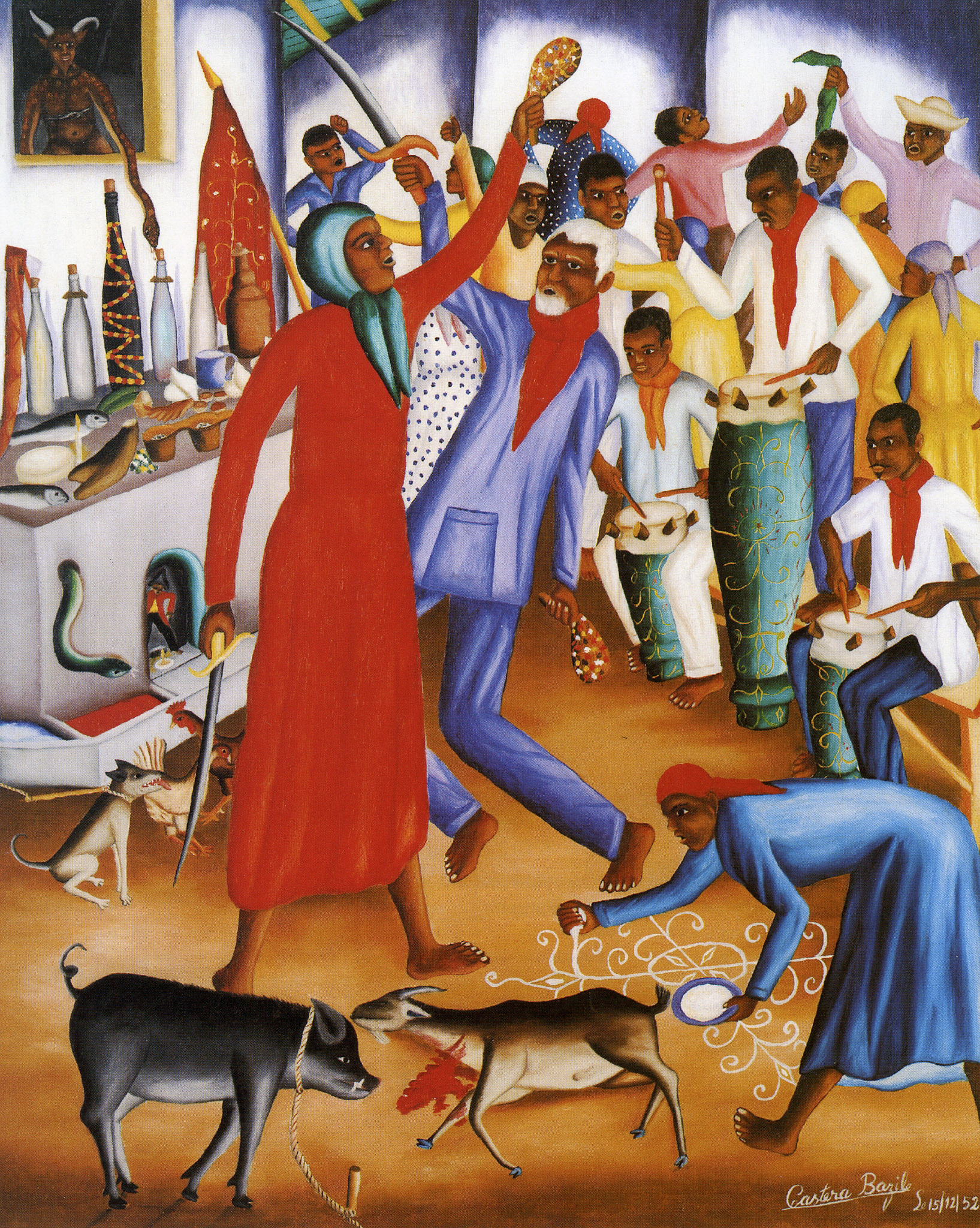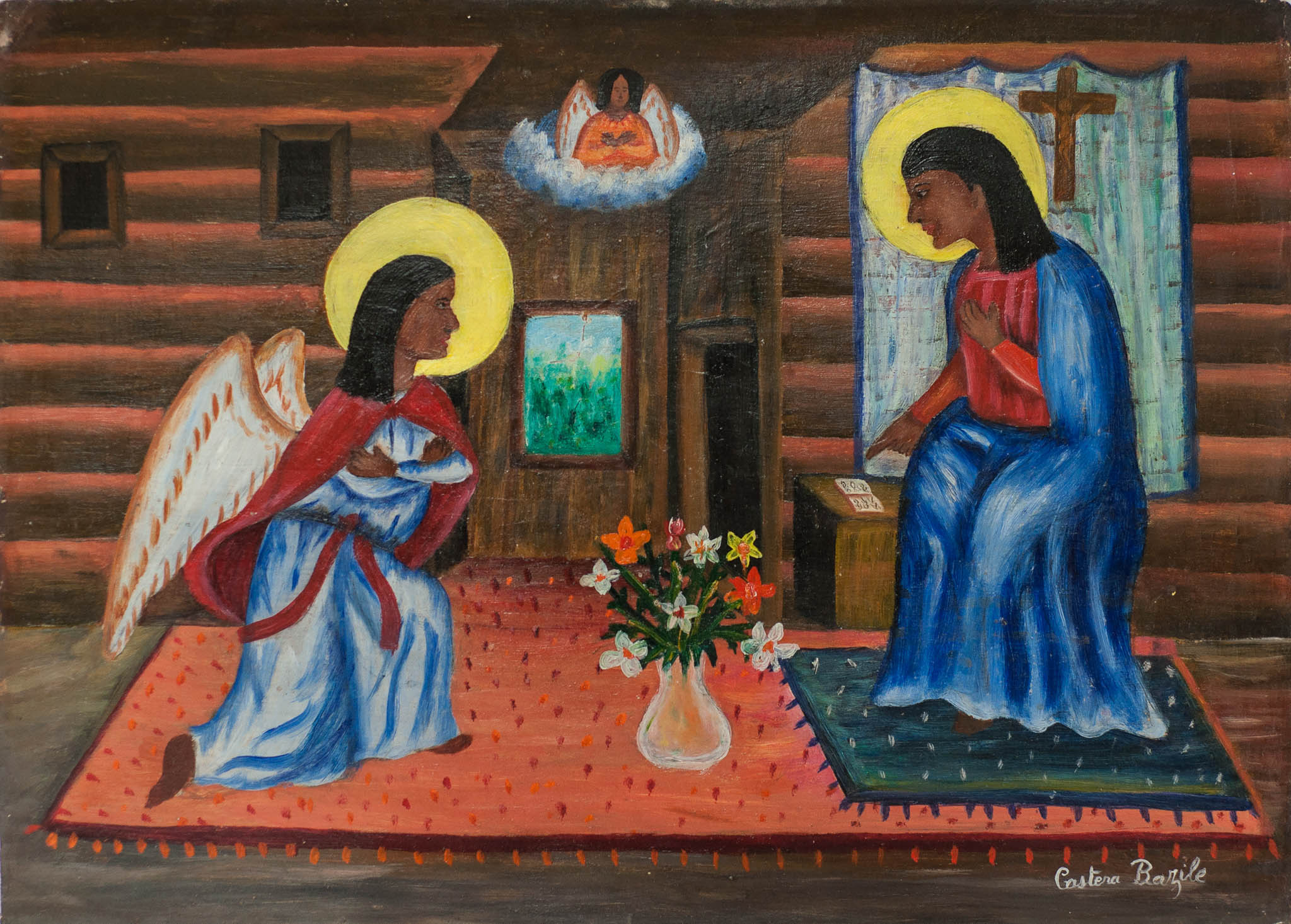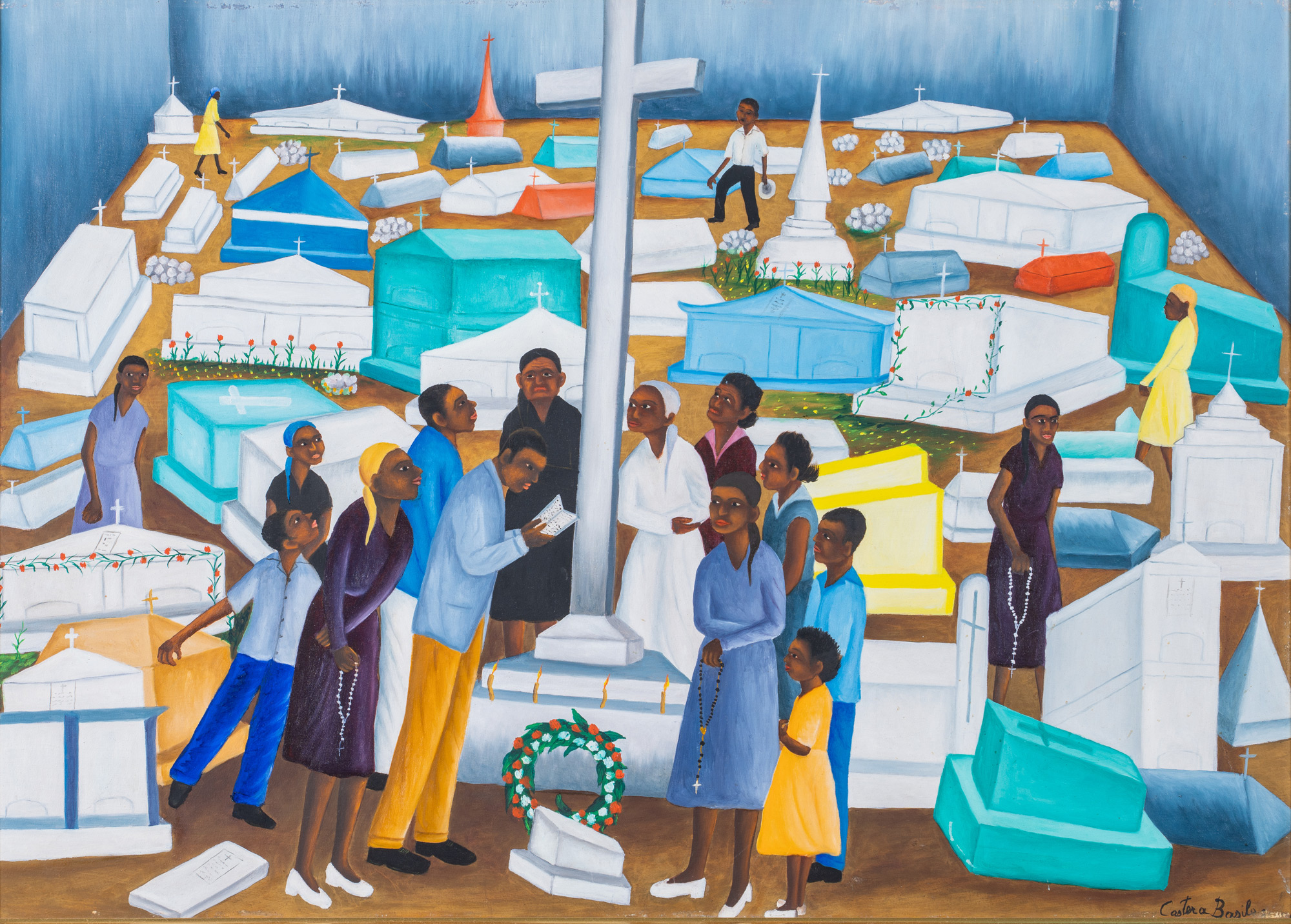
"His paintings are instinctive compositions with warm and harmonious hues and the expression of the sincerity typical of Haitians". ~ Gérald Alexis, Haitian Painters.
Castera Bazile was born on October 7, 1923 in Marbial, a
district in the commune of Jacmel. He attends the Cochon-gras presbyteral
school in Jacmel. A very young orphan, he was raised by his centenary
grandmother who instilled in him solid principles as well as respect for
work. Eleven-year-old Bazile travels to Port-au-Prince, forced to find
work rather than continue his studies. Thus in November
1945, he entered the Art Center as a handyman.
Stimulated by the artistic effervescence of the Art Center,
he launched himself into painting in 1947, encouraged by DeWitt Peters who saw
in him a great talent. It focuses particularly on themes relating to daily
life: maternity, birth or poverty. Bazile develops a great mastery of
contrasts and colors, handling the variations of blue, blue-green, yellow with
occasional notes of pure vermilion and intense green. His personal style is rapidly moving towards a
simplification of forms and a bold distribution of pure color.
Fervent Catholic and connoisseur of voodoo, his intense
faith inspires his most beautiful works. In his religious paintings, the
duality of Catholic and Voodoo beliefs allows him to renew religious art while
embodying the specificity of Haitian culture.
The power of its expression is
adapted to the monumental proportions of the fresco. His concern for symbolic realism makes him an exceptional
natural muralist. Selected
in 1951 with seven other painters including Philomé Obin and Rigaud Benoit, he
painted three historic frescoes in the Episcopal Cathedral of Sainte-Trinité in
Port-au-Prince: The Ascension of Christ in the apse, The Baptism of Christ and
The Christ expels the money changers from the Temple in the north
transept. The building was badly damaged during the earthquake of January
12, 2010, but the Baptism of Jesus was partially spared. These monumental
works are among his most successful. They are often compared to the frescoes by Piero della Francesca
for the treatment of composition and perspective.
Very quickly, his career took on an international
dimension. He successfully participated in several exhibitions in Haiti
but also in the United States and Europe. In 1955, he won the first grand
prize of the Caribbean International Competition sponsored by the company
ALCOA. He also won in 1957 an artistic competition organized by Holiday
magazine and received a reward of $ 1,000, a significant sum for the time.. B Azile
is one of the most Haitian artists Collectionn ed. His works
are present in permanent public and private collections such as the Musée
d'Art Haïtien du Collège Saint-Pierre in Port-au-Prince, the Milwaukee Art
Museum and the MoMA in New York .
Considered a major Haitian artist, Castera Bazile died at
the age of 43 of tuberculosis, on February 27, 1966, at
the sanatorium of Port-au-Prince. He was at the peak of his career.




























